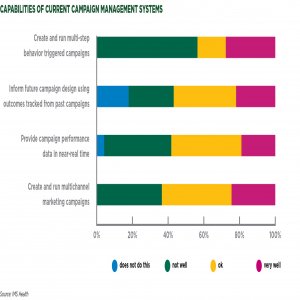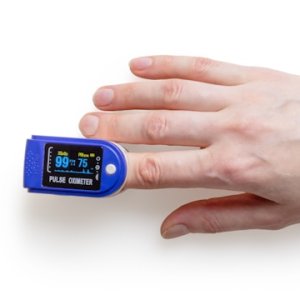Streamlined Purchasing Solutions

STORY INLINE POST
Q: How would you describe the company and the market niche in which you are working?
A: The company was formed five years ago by a group of associates with an average of twenty years’ experience behind them. We buy medical equipment on behalf of the government which, historically, has lacked strength in terms of purchasing. Administration of purchased equipment is poorly managed, meaning purchases depreciate faster and must be replaced earlier than necessary. People charged with equipment maintenance are often not trained in the field and basic things like storehousing and tools are not up to standard. Machines break down, and if there is inadequate training to repair them, the hospital simply purchases a new piece of machinery. There can also be duplication due to a lack of communication. Practices such as these reduce attention and coverage and our intervention is to help hospitals buy more efficiently, beginning with a full audit of requirements. When we purchase equipment, upgrades and maintenance are included in the monthly payment. The contract lasts for between two and three years and, at the end of the contract, the hospital has the option of receiving an upto-date replacement free of charge. Equipment arrives in optimum condition and remains that way, and so the hospital is able to either sell the existing machinery or to donate it to a lower-impact hospital. At present there are perhaps 15 other companies working in a similar way to Vensi, with more being born as the market niche begins to open. In order to be successful in the industry however it is necessary to have the right capital, infrastructure, experience, and a strong brand identity.
Q: What impact do your services have on hospital budgets?
A: Our purchases add value, because hospitals get the most out of their equipment and their budget. Instead of MX$1 million, purchasing budgets come in at MX$250,000. Hospitals, institutes, and health agencies can maximize resources by means of our services. Since up to 30-35% of hospital budgets can be allocated to maintenance, we demonstrate how to include this in budgets and anticipated costs. It is in our nature to be integrators rather than sellers. Since doctors and health institutes tend to harbor loyalty to a particular brand, we make recommendations based on the most cost-effective option for their needs, but they also have the opportunity to request specific brands. Attention to their requirements means we can boost productivity between 20 and 30% without actually modifying the budget. Due to general hospital requirements however, we cannot consider business below a certain volume of sales. One issue we have is that almost all sales directives come from doctors, when their strength is in medical care rather than administration.
Q: With strong industry ties, is it difficult to balance official distribution possibilities with objective service provision to hospitals?
A: Companies began to approach us over the last two years asking us to represent them, but we are unable to operate in this way. Others have requested integration with Vensi, but there are issues of compliance and certification that would make this complicated and compromise our service provision goals. Nevertheless, we are open to creating dialogue with companies and forming alliances if their finances, levels of business, and compliance provisions are in order. This is about spotting market opportunities that are mutually beneficial, rather than making formal distribution agreements. We have worked with all three major image distributors in the Mexican market and, while we have no formal agreement with any of them, we always choose companies offering the best technology and specifications.
Q: How do you differentiate yourself from other integrators?
A: Many integrators focus purely on equipment sales and maintenance, while some may divide themselves between this remit and the integration of human capital. Our overall aim is to sow the seeds of intelligent sales in a market that is not business-minded, since about 95% of our clients – with the exception of Hospital Ángeles – are public sector. To this end, we outsource work to a logistics company, smoothing the process of importations, transport, and so on. Since the private sector looks for profitability and products, entering this market would involve competition with our own manufacturers and existing client base, creating a potential conflict of interest.
Q: What particular features of supplying to the public sector do you find challenging?
A: The government decides the most appopriate quantities, structure, and agreements, all of which are unionized. The institutions tend to talk directly to manufacturers but what we offer is our expertise, personnel, and connections in equipment supply. Consolidated sales would solve a number of problems, but hospitals have extremely specific requirements based on best-practice principles. Beds and monitors can be provided by generic manufacturers, and therefore obtained through consolidated sales, but often hospitals want to purchase in huge quantities, beyond the annual production of many manufacturers. At present, the government still has relationships with large businesses supplying poor equipment at high prices, simply because of this quantity issue. We want the government to buy across more than one brand in order to increase competitiveness, and push down prices. Many other companies have the capital and experience to provide to public health services but we need to connect both aspects. If we can succeed in doing this, we will begin to work more within the private sector.
Q: How have budget cuts in the public sector affected your work?
A: Firstly, strategic planning within hospitals from one sixmonth period to the next has changed and they no longer have the capacity to make projections on needs that are matched to finances. We have been obliged to find new clients in order to adjust to the decline in demand, meaning that we cannot expand our income on a small client list. IMSS, ISSTE and other large hospitals in Monterrey and Mexico City, for example, are already saturated, and we have seen sporadic price wars. The next market opportunity lies in smaller states with less concentration, with insufficient equipment and low participation. Since our business practices, requirements, and basic certifications are up to standard, there is no barrier to entry. I want to increase the productivity of existing installations by 20% and moving into three or four new states by the end of the year would lift our client base by 30 to 40%.
Q: How can integrators like Vensi help improve healthcare within Mexico on a general leve?
A: Digitization of radiology has cut travel costs for lowincome patients. Where hospitals do not have radiology machinery or the staff to interpret results, it used to be the case that patients would have to travel long distances to find an appropriately equipped medical center, or not be able to receive treatment. Now, radiologists can upload data to the cloud, doctors can download and interpret the results, and the patient is kept updated with much less complication. In some cases, we have cut treatment times from 72 hours to three. Also the savings we bring to hospitals make a difference. Since there is software in place which administers patient data, but which is too primitive for detailed interpretation, we are not required to make wholesale replacements to existing technology. Telemedicine is another potentially huge area for expansion. Three hospitals are already doing well with this, but we want municipalities and family clinics to have a telemedicine unit so that a GP with a heart patient or a cancer patient can connect with other physicians miles away and provide care to the patient without the need to incur travel costs. In this way we can increase coverage without increasing costs.
Q: How have you have helped hospitals to communicate and collaborate with one another?
A: Some hospitals in Mexico can now request blood and equipment from other nearby hospitals. At least five hospitals per day make use of a service where they can log into a database and request supplies or surgical equipment from a hospital with the inventory they need and we provide logistics such as transport, refrigeration, and tracking. In the past, hospitals would rent equipment as a package, but we have reduced the associated costs by allowing a bespoke selection of requirements. This is vital, since individual patients have individual needs and means that hospitals no longer have to incur costs for equipment they do not use. This has been especially useful for ophthalmology, hyperbariatric procedures, neurosurgery, and minimally invasive surgeries.























